Deviating from its more typical “best of (neighborhoods, doctors, crab shacks…)” lifestyle articles, Baltimore Magazine featured in its July issue a far less sunny piece on the ravaging impacts of Hagerstown, Md.’s opioid crisis. Can H-Town Kick Its Habit?, by Ron Cassie and Lauren Larocca, describes what’s become an all too familiar story of how a once thriving rural community lost its economic base—in this case, manufacturing—and, over time, the businesses and jobs it directly and indirectly supported. Growth stalled, buildings were shuttered, and the cross section of highways that once carried resources and products in and out of town today enable the convenient trafficking of heroin, fentanyl, and other drugs. The death toll has since been climbing precipitously.
The perilous connections between economic decay, deepening despair, and the shocking rise in related overdoses and suicides—in Hagerstown and around the country—have been well-documented. As Elizabeth Kneebone and Scott Allard demonstrate in a 2017 report, almost every county in the United States experienced an uptick in drug overdose deaths between 2000 and 2015; none registered a decline. Moreover, it is largely poor counties—and counties that became poorer between 2000 and 2015—that have been among the hardest hit. New U.S. Department of Health Human Services research confirms that, on average, areas with lower economic prospects have higher rates of opioid prescriptions, hospitalizations, and overdose deaths.
With over a quarter of the population living below the poverty line, and an unemployment rate over 10 percent, Hagerstown fits the profile of a community where joblessness and poverty have a strong correlation to—and likely a causal effect on—drug use, and its destructive individual and communal effects. But as the authors of H-town astutely observe, Hagerstown’s economic challenges have a physical manifestation that arguably has made its own—albeit less widely explored—contribution to the scourge. Perhaps it is not only the economic distress in Hagerstown and other similarly situated communities, but also the concomitant decline in the place itself—in its collection of Main Street businesses, gathering places, and the social connections they engender—that contributes to residents’ mental and emotional anguish. It is this anguish that then leads too many to seek out the quick, if short-lived, reprieve that opioids and other such palliatives provide.
| The Great Recession and its aftermath exacerbated Hagerstown’s longer-term deterioration. According to its visionHagerstown 2035 plan, following the Recession “new commercial and residential development has been minimal, while developed portions of the city, including downtown and the urban core, experience the challenges with vacancies, minimal investment, and declining property values.” The H-town article paints a bleak picture, noting the sad fact that one of the city’s several drug treatment centers, the Phoenix Health Center, “draws more people downtown than anything else on a Saturday.” |
Poverty, place, and isolation
Plenty of research confirms that social isolation and substance abuse operate in vicious, downward spinning cycles whereby loneliness and depression beget drug and alcohol use, which leads to further sequestration as individuals pull away from family and friends. That isolation can initially stem from personal strife—grief, illness, job loss—that comes in tons or ounces, as the Edmund Vance Cooke poem goes, depending on what one makes of it. And it may be exacerbated, as Robert Putnam contended in his 2000 book Bowling Alone, by a fraying of the sort of civic structures and institutions that help buffer us, as individuals, against all the inescapable bad stuff that comes with living a life. But as I read the Hagerstown article, I couldn’t help but think about the role that our physical environment—the public and private spaces where many of those structures are, or ought to be, forged and reinforced—plays in the process.
Put more succinctly, are our failing places killing us?
Observations of rats suggest they might be. Johann Hari, in a popular TED talk based on his study and writings on drug addiction, cites the work of Canadian psychologist Bruce Alexander to support his own contention that we have addiction, and thus our attempted fixes for it, all wrong. In experiments conducted in the 1970’s and ‘80s, Alexander demonstrated that while rodents in desolate, isolated cages invariably preferred drug-laden water over plain old tap, those in interesting, fulfilling ‘rat parks’ (lots of cheese, play things, and friends), had almost no interest at all in getting high, and few if any actually overdosed. This experiment led Alexander to surmise that more than anything else, addiction is related to our environment, and the opportunity it provides to bond and connect with others.
Researchers have since criticized Alexander for his too-sweeping dismissal of the chemical causes of addiction, but a quick scan of the literature seems to affirm a general agreement that environment plays a more significant role in addiction than current policy approaches recognize. If so, then perhaps drug use, dependency, and the high and rising tide of “deaths of despair” in Hagerstown and elsewhere is for some a response not just to the hardships associated with job loss and poverty, but to the lack of social connections people need to help them emotionally, and perhaps even materially, weather the suffering. And that lack of connection in turn can at least partially be attributed to a decline—wrought by both suburbanization and economic change—in the local concentrations of grocers, cafes, barbershops, and maybe even bowling alleys that once facilitated the everyday, casual encounters and interactions essential to relationship- and community-building.
The location, accessibility, and offerings—for everyday needs as well as everyday pleasures—of those outlets and amenities matters. The placemaking movement, in fact, is centered on helping citizens create streets and spaces where they feel comfortable and safe, that foster sociability and interaction, and, importantly, in which they feel a sense of pride, ownership, and belonging. Where these places don’t exist, or have been lost, we can become—by virtue of distance, inconvenience, and the extra effort it takes to “reach out” rather than “run into”—unmoored from our community and each other, including those who might help save us from ourselves when things go south.
The causes of drug addiction are myriad, complex, and unique to each and every person who suffers from it. If they weren’t, we’d be far better positioned to address it in ways that actually work. The truth is, for all the research, we still seem to have scant understanding of the issue. But we do know who is dying and where, providing an opportunity for researchers and practitioners of various disciplines—healthcare specialists, yes, but also sociologists, planners, placemakers, and community leaders—to work more closely with one another to examine how the quality and design of our communities might contribute to, and potentially help mitigate, this increasingly dire challenge.
Hagerstown, for its part, seems to understand already this nexus between the vibrancy of the city and the well-being of its citizens. The city now has a robust Main Street program, and over the past several years the city and state have been investing millions of dollars in educational institutions, an expanded farmer’s market, and various recreational and cultural assets—all aimed at encouraging more people to engage and intermix in the downtown area. In time, perhaps these kinds of investments won’t just improve H-town residents’ lives, but might also help save some of them.
Thanks to Joanne Kim for her research assistance.
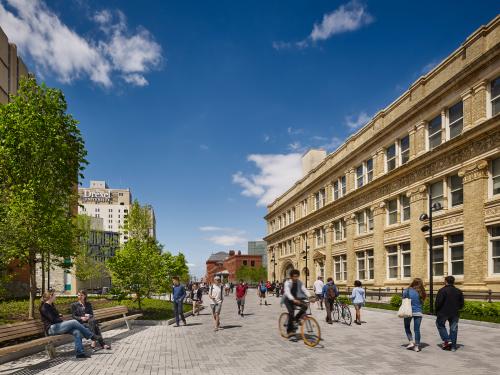
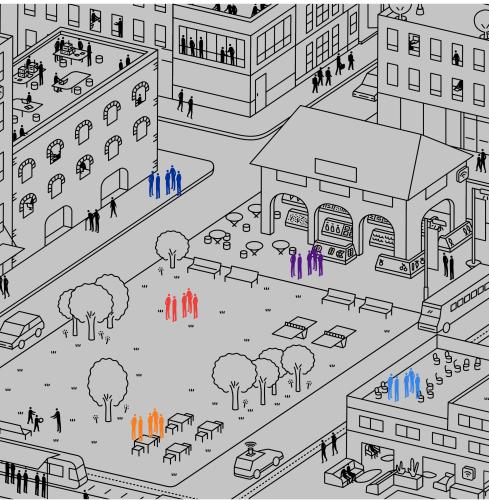
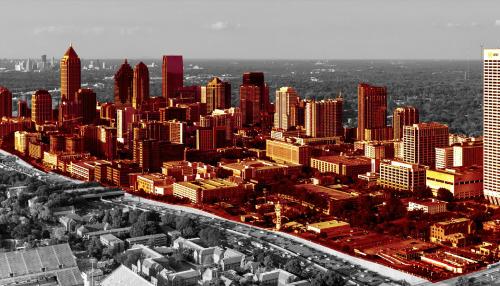

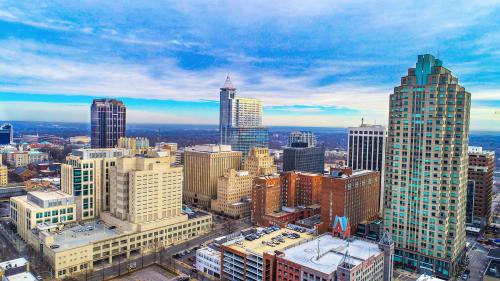
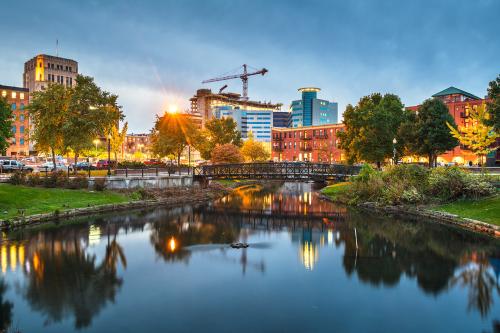
Commentary
Addiction by design: Place, isolation, and deaths of despair
August 1, 2018